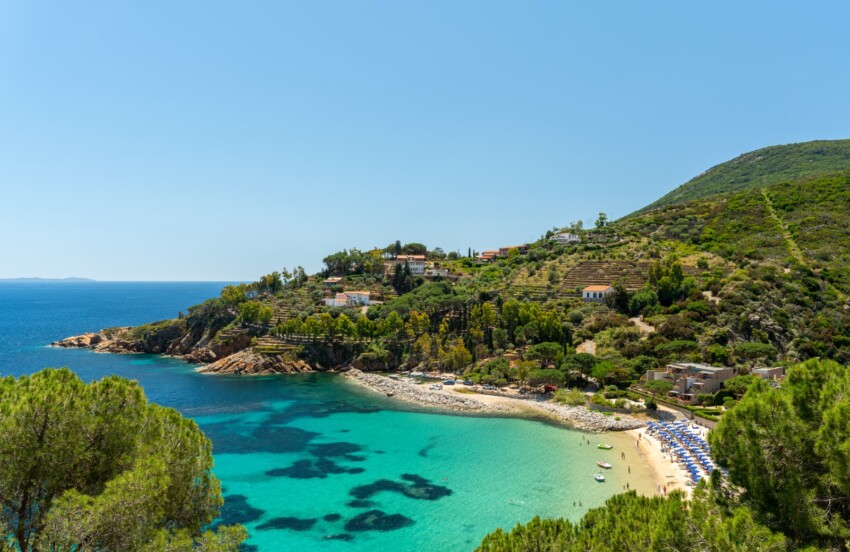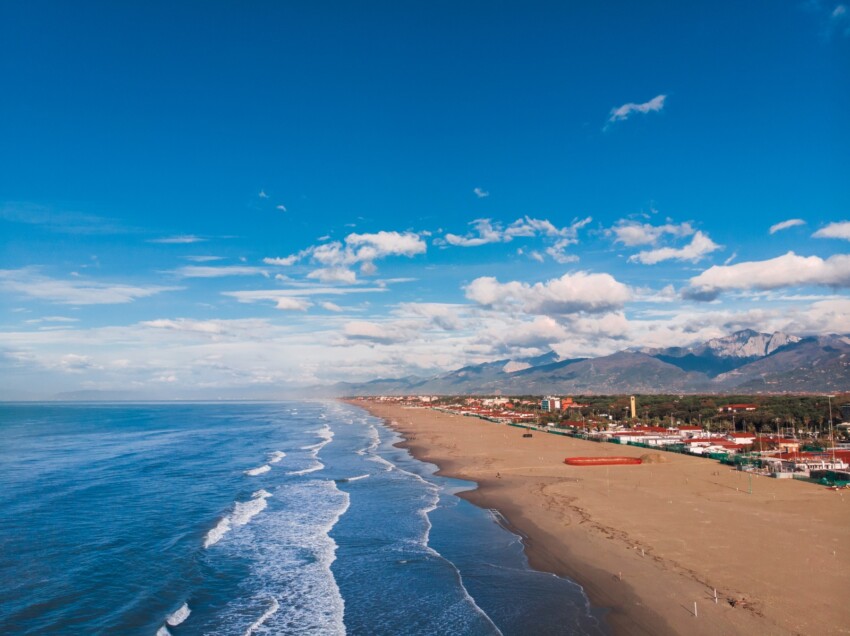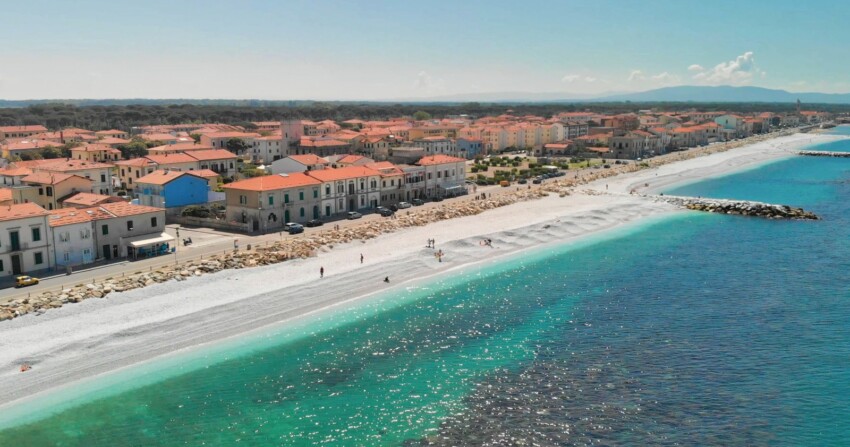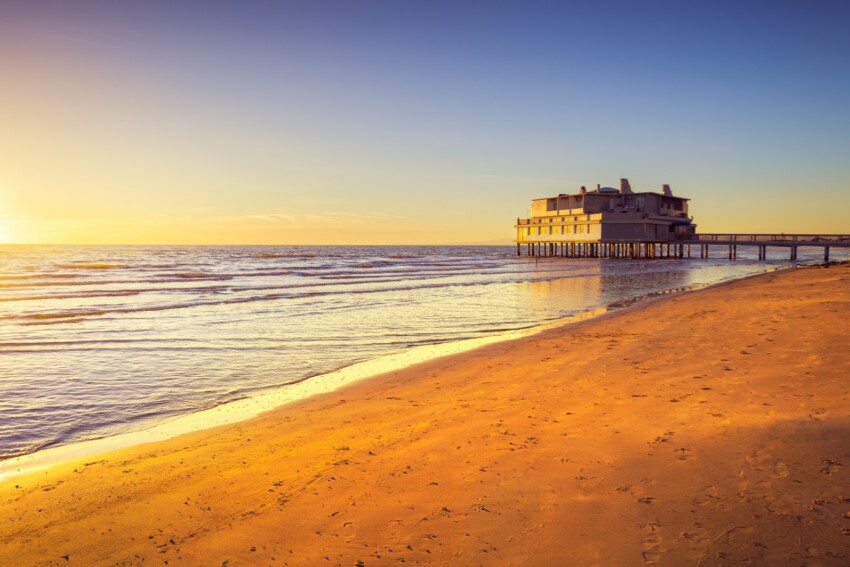

Sea in Tuscany is a guarantee of a perfect holiday. Choosing to go on a seaside holiday in Tuscany means in fact being able to count on dream landscapes, excellent tourist services, a large offer of hotels, flats and b&b’s, and fast road and rail connections.
Tuscany’s beaches are very varied, so there is something for everyone, both for those who love long sandy shores and for those who prefer to lay their towel on the rocks. Some beaches are busy and fashionable, while others allow total immersion in nature.
With so much choice, how do you decide where to stay? To begin to guide you in your choice, let’s start by getting to know the different stretches of the Tuscan coast.
Tuscany‘s approximately 400 km of coastline are divided into the following areas (from north to south): Riviera Apuana, Versilia, Litorale Pisano, Costa degli Etruschi and Maremma; to these must be added the 200 km of coastline of the Tuscan Archipelago.
We present them all below, recommending for each area the sea resorts not to be missed.
The coast of northern Tuscany falls in the provinces of Massa Carrara, Lucca and Pisa: the former is in the north and borders on Liguria. The northernmost part is washed by the Ligurian Sea; going down you pass into the Tyrrhenian Sea.

The name Versilia has become synonymous with seaside holidays since the 1960s and its most famous resorts are one of the symbols of Italy’s economic boom. Capable of keeping up to date, the seaside towns of Versilia have stood the test of time and are still popular today.
Kilometre-long beaches, bathing establishments with top-level services and nightlife have made the fortune of Forte dei Marmi, a VIP resort of which everyone remembers the legendary discotheque La Capannina.
Perhaps a little less snobbish, but certainly no less effervescent, is Lido di Camaiore, the lively seaside resort of a pretty village at the foot of the Apuan Alps. If you are looking for a quieter, family-friendly resort, head for Marina di Pietrasanta.
Viareggio is the only seaside town in Versilia that attracts crowds of tourists even in winter, thanks to its historic Carnival. An elegant holiday resort, full of Art Nouveau buildings, it is also suitable for young people due to the presence of numerous nightclubs.

Many people are convinced that Versilia corresponds to the northernmost part of Tuscany. In reality, the northern end of the Tuscan coast is called Apuan Riviera. About 20 km long, it comprises one part in Liguria and one part in Tuscany: the latter falls within the province of Massa and Carrara.
To the east, the Riviera is bordered by the Apuan Alps, from which it takes its name, and is therefore an ideal area for those who want to combine afternoons at the seaside and hikes in the mountains.
The two best known seaside resorts are Marina di Massa and Marina di Carrara, both awarded the Blue Flag for the quality of their tourist services.

The Pisan Seaside is the sea outlet of the city of Pisa, between Marina di Vecchiano to the north and the border with the province of Livorno to the south.
The beaches along this stretch of coastline are less famous than those in Versilia, but they are experiencing increasing popularity. They are a valid alternative: on average cheaper, they have nothing to envy in terms of landscape beauty and services.
Marina di Pisa is the coastal hamlet of one of the three most visited cities of art in Tuscany: an ideal base for a sea and culture holiday. Other popular Pisan coastal resorts are Tirrenia and Marina di Vecchiano-Migliarino.
The coast of central-southern Tuscany falls within the provinces of Livorno and Grosseto, the former located in the central part, the latter in the south. In some places, the coast is high and rocky, in others low and sandy.

The Maremma is a large geographical area that includes much of the central-southern Tuscan coast and the western part of the province of Viterbo in Lazio. It is divided into several areas, one of which has risen to prominence and is often confused with the entire Maremma: we are talking about the Maremma Grossetana.
It is difficult to identify a common characteristic of the beaches in the Maremma because this vast area includes both well-known and frequented seaside resorts and quiet beaches immersed in nature. We recommend the 5 best seaside resorts in the Maremma.
If you do not want to renounce the charm of typical Tuscan villages for your seaside holiday, head for Castiglione della Pescaia or Capalbio.
Follonica is a former industrial town converted to seaside tourism: its long sandy beaches satisfy both those who want bathing establishments with all services and those who are looking for wild-looking beaches.
Marina di Grosseto is a quieter seaside resort, ideal for those who want a comfortable holiday.

A stretch of the Grosseto Maremma with a high concentration of dream beaches is the Costa d’Argento (Silver coast), corresponding to the southern end of Tuscany. It is a high and rugged coastline: the beaches are mostly rocky and pebbly, almost always set in coves or inlets.
The top attraction is Argentario, a sheer promontory about 600 metres high and entirely covered by dense vegetation. Beloved by yachtsmen for its marinas and beautifully coloured waters, it can also be reached by car because it is connected to the mainland.
The two main centres are Porto Santo Stefano and Porto Ercole.

It is somewhat confusing how many names the Alta Maremma, the northern part of the Maremma, is called. From an administrative point of view, it falls entirely within the province of Livorno, hence the name Maremma Livornese; historically, however, this territory was referred to as Maremma Pisana.
The coastal part is known as Costa Livornese or Costa degli Etruschi. The three top locations for seaside holidays are Marina di Bibbona, Marina di Cecina and Rosignano Marittimo.
The first two are typical holiday resorts with long sandy beaches, both free and equipped. Both are surrounded by green pine forests.
Caribbean atmospheres await you in Rosignano Marittimo, a locality famous for its White Beaches: these are beaches of very white sand bathed by a blue sea and framed behind by thick vegetation.
The territory of Tuscany also includes the Tuscan Archipelago: seven inhabited islands located in the arm of the sea separating the Tuscan mainland and Corsica.
To see them on a map, they almost seem to be lined up: some lie in front of north-central Tuscany, others in southern Tuscany, so the port of departure may vary depending on the island chosen. The duration of the sea crossing is similar for all the islands, about one hour.
Another feature common to all the islands is the beauty of the landscape: the sea is blue and crystal clear and the vegetation grows luxuriantly. Much of the territory of the islands and the surrounding waters fall within the protected area of the Tuscan Archipelago National Park.
Which island to choose between Elba, Giglio, Capraia, Montecristo, Pianosa, Gorgona and Giannutri? We recommend the first three.

Elba is the main island of the Tuscan Archipelago: it is the largest (it is the third largest Italian island after Sardinia and Sicily), the most developed and, consequently, the most visited.
Choosing the island of Elba for your holiday by the sea means being able to count on a wide range of accommodation and services. The two main towns on the island, Portoferraio and Porto Azzurro, are two historic towns with plenty of shops, bars and restaurants.
Elba is also the recommended choice for young people in search of nightlife and entertainment, for those who want to take a beach holiday out of season, and for trekking and mountain biking enthusiasts.

The Island of Giglio is the second largest island in terms of size and tourist influx. It is a much quieter island: there are only three inhabited centres and the tourist offer is mainly aimed at couples and people seeking relaxation.

The Island of Capraia is distinguished from Elba and Giglio by its volcanic landscapes: the island’s symbolic image is that of Cala Rossa, a huge rock face of a deep red colour overlooking a blue sea.
Much of the coast is high and jagged, with breathtaking but difficult to reach beaches; there are, however, a few sandy beaches in the eastern part of the island.

